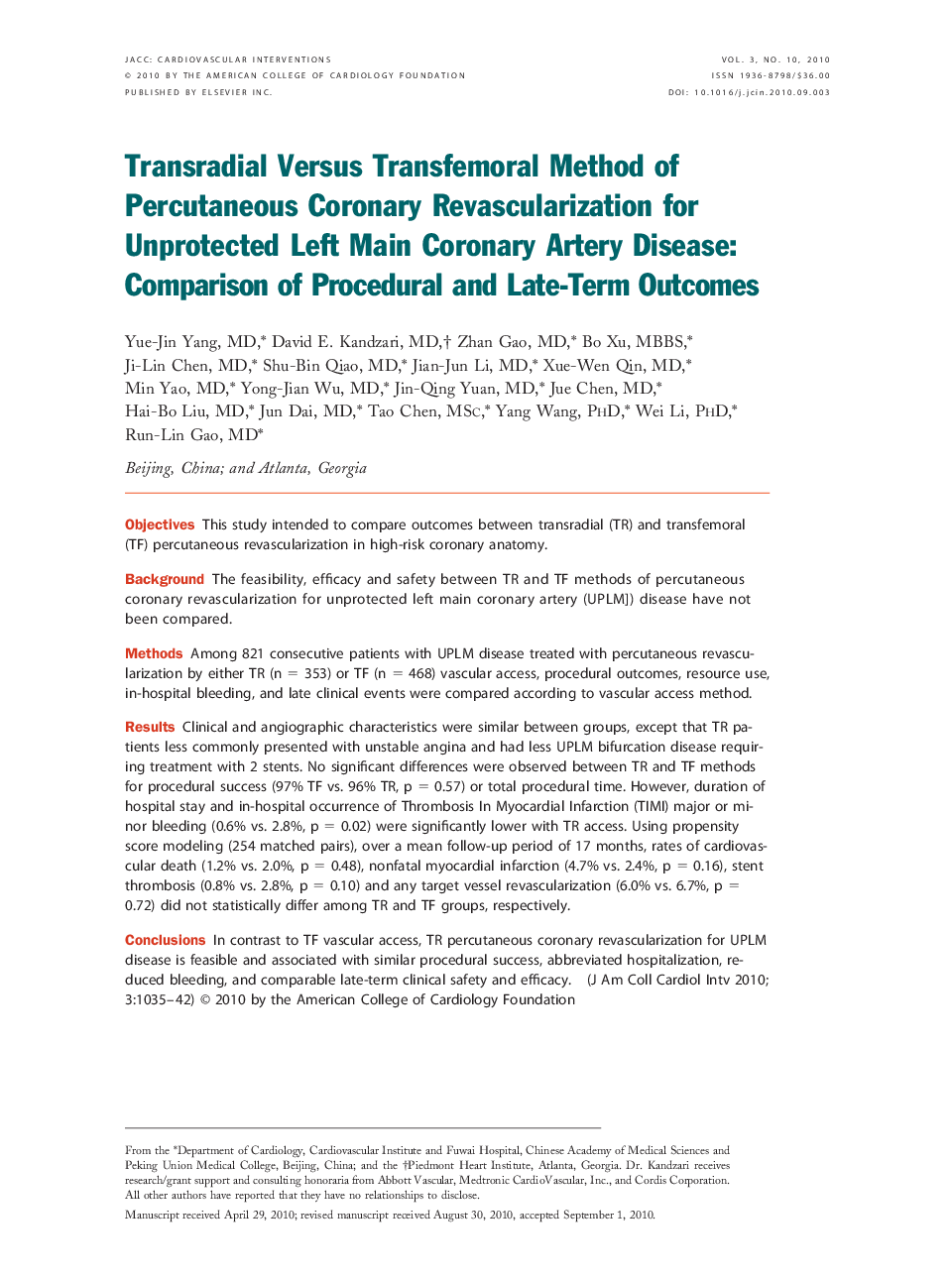| کد مقاله | کد نشریه | سال انتشار | مقاله انگلیسی | نسخه تمام متن |
|---|---|---|---|---|
| 2941375 | 1177068 | 2010 | 8 صفحه PDF | دانلود رایگان |

ObjectivesThis study intended to compare outcomes between transradial (TR) and transfemoral (TF) percutaneous revascularization in high-risk coronary anatomy.BackgroundThe feasibility, efficacy and safety between TR and TF methods of percutaneous coronary revascularization for unprotected left main coronary artery (UPLM]) disease have not been compared.MethodsAmong 821 consecutive patients with UPLM disease treated with percutaneous revascularization by either TR (n = 353) or TF (n = 468) vascular access, procedural outcomes, resource use, in-hospital bleeding, and late clinical events were compared according to vascular access method.ResultsClinical and angiographic characteristics were similar between groups, except that TR patients less commonly presented with unstable angina and had less UPLM bifurcation disease requiring treatment with 2 stents. No significant differences were observed between TR and TF methods for procedural success (97% TF vs. 96% TR, p = 0.57) or total procedural time. However, duration of hospital stay and in-hospital occurrence of Thrombosis In Myocardial Infarction (TIMI) major or minor bleeding (0.6% vs. 2.8%, p = 0.02) were significantly lower with TR access. Using propensity score modeling (254 matched pairs), over a mean follow-up period of 17 months, rates of cardiovascular death (1.2% vs. 2.0%, p = 0.48), nonfatal myocardial infarction (4.7% vs. 2.4%, p = 0.16), stent thrombosis (0.8% vs. 2.8%, p = 0.10) and any target vessel revascularization (6.0% vs. 6.7%, p = 0.72) did not statistically differ among TR and TF groups, respectively.ConclusionsIn contrast to TF vascular access, TR percutaneous coronary revascularization for UPLM disease is feasible and associated with similar procedural success, abbreviated hospitalization, reduced bleeding, and comparable late-term clinical safety and efficacy.
Journal: JACC: Cardiovascular Interventions - Volume 3, Issue 10, October 2010, Pages 1035–1042